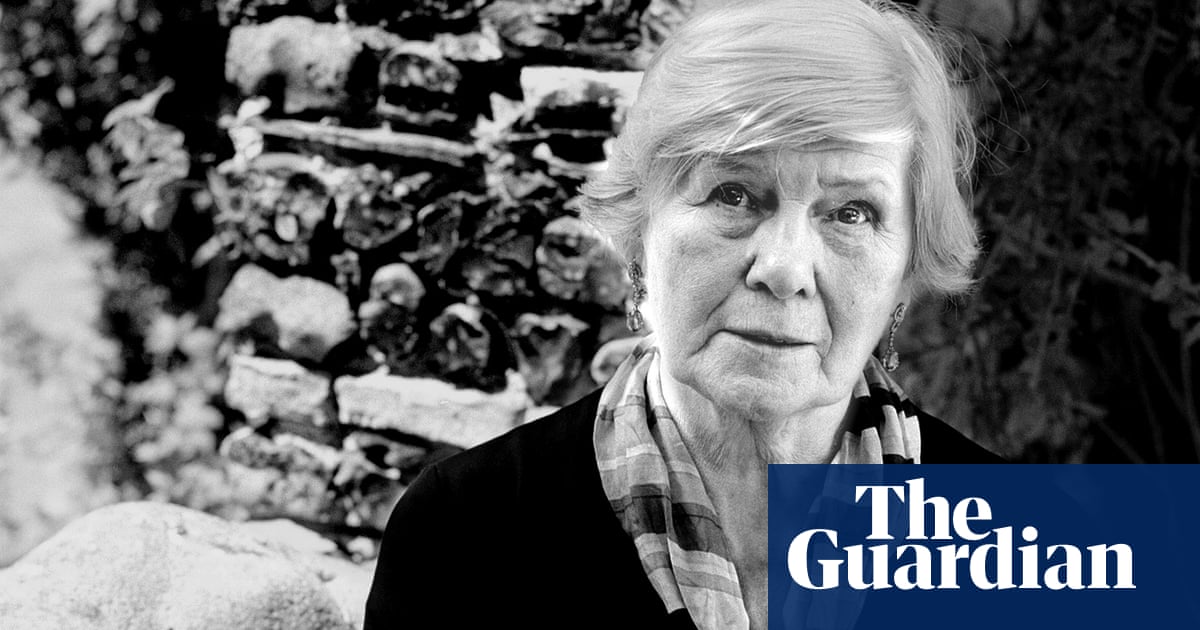Jane Gardam, who hasdied aged 96, was such an exuberant, inventive writer. It’s the sheer energy of the voice you notice first, picking up one of her books from the shelf; she had the easy authority of a natural storyteller. Her first book, A Long Way from Verona,was written for children and published in 1971, when she was in her early 40s. “I ought to tell you at the beginning,” announces Jessica Vye in the first sentence, “that I am not quite normal, having had a violent experience at the age of nine.” In the book, clever bookish girls, at a private school in wartime, are hungry for adventures and also for tea with cress sandwiches and chocolate eclairs; they belong to that class beloved of British fiction in the old days, educated people fallen on hard times. Jessica’s father has left his job as a schoolmaster to follow his vocation as a poor curate. The Summer After the Funeral, published in 1973,begins with the death ofAthene Price’s elderly vicar father, when his young wife and children have to move out of the vicarage with no money. Athene believes she’s a reincarnation of Emily Brontë; Jessica has mentioned Henry James, Chopin and Shakespeare by the end of her second chapter. These books belong to the tail-end of that rich period of English middle-class children’s writing, which depended upon an audience of sophisticated and informed young readers; it was partly through the books that their readers grew sophisticated and informed.
These books are set in the north of England; Gardam grew up mostly in North Yorkshire. The difference between the rugged north and the posh home counties, which are the other half of her subject, cuts across her fiction. In her adult novel Faith Fox she describes two tribes, “South and north, above and below the line from the Wash to the Severn, the language-line that is still not quite broken to this day.”
Gardam was born Jean Mary Pearson in 1928 in Coatham, Redcar, where her father was a schoolteacher. She won a scholarship to Bedford College in London to study English, where the “work was dreary, heavy with Anglo Saxon” and she was bored “except for when I was in the wonderful but ice-cold Bedford College library (no coal or heating in the 40s).” She married David Hill Gardam, who became a distinguished KC and expert in construction law; they had three children. When she met Stevie Smith at a party, she told her she was “a Wimbledon housewife who writes novels”. Smith persisted: “But who are youreally?”
Sign up toBookmarks
Discover new books and learn more about your favourite authors with our expert reviews, interviews and news stories. Literary delights delivered direct to you
after newsletter promotion
In Faith Fox Gardam writes that a mask was “slapped on” by “the fearless, comic, incorruptible battle-axe Englishwoman … out of consideration, out of a wish not to increase concern and also out of a genetic belief that our deepest feelings are diminished when we show them”. Maybe it’s partly that inheritance which explains why many of Gardam’s adult novels carry something over tonally from her beginnings in children’s fiction. The opening ofCrusoe’s Daughter, published in 1985, promises all the enchantments of childhood reading. “I am Polly Flint. I came to live at the yellow house when I was six years old. I stood on the steps in the wind, and the swirls of sand, and my father pulled the brass bell-knob beside the huge front door.” Although the novel goes on to narrate the whole of Polly’s life, including her alcoholism and thwarted love affairs, it can’t quite get out from under that brisk, intelligent over-voice, helpless not to be reassuring, however dark the material.
It’s in her final trilogy (Old Filth, 2004,The Man in the Wooden Hat, 2009, andLast Friends, 2013) that she achieved the perfect balance between manner and matter. Each novel tells the story of the same three lives, but from a different perspective: “old coelacanth” retired judge Edward Feathers (Failed in London Try Hong Kong), Feathers’ wife Betty, and his career rival, Veneering, who was once – just once – Betty’s lover. The books gather up these lives retrospectively, from the vantage point of old age and death; their collage of fragments, contradictions and memories compose a portrait of a vanished world of manners, politics, class, sex, empire. Gardam’s knowing ironies come into their own, and all the jeopardy and pain, which can feel tamed or missing in earlier books, crowds into the cracks between the fragments, around the edges of the masks. Yet the trilogy isn’t gloomy: it’s funny, ruthless, clever and somehow uplifting, without a trace of sentimentality. The whole is a triumphant achievement.
